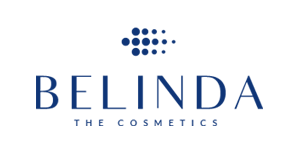Machinery Regulation (EU) 2023/1230: Your Guide to CE Marking / CE Certification for Machinery
The Machinery Regulation (EU) 2023/1230 represents a significant shift in the landscape of machinery safety within the European Economic Area (EEA). Replacing the Machinery Directive 2006/42/EC, this new regulation sets out stringent requirements for placing machinery on the market. This comprehensive guide will delve into the details of the Machinery Regulation (EU) 2023/1230 and its implications for CE certificatiion & CE marking of machinery.
Understanding the Machinery Regulation (EU) 2023/1230
The Machinery Regulation (EU) 2023/1230 is a directly applicable law within the EU, meaning it doesn't require transposition into national legislation. This harmonization aims to ensure consistent safety standards across all member states. Its core objective is to ensure the free movement of safe machinery within the EEA while protecting the health and safety of persons, domestic animals, and property. Key concepts associated with the Machinery Regulation (EU) 2023/1230 include CE conformity, risk assessment, technical documentation, essential health and safety requirements (EHSRs), EU declaration of conformity, harmonized standards, and machinery safety.

Why is the Machinery Regulation (EU) 2023/1230 important?
Compliance with the Machinery Regulation (EU) 2023/1230 is not just a legal obligation; it offers numerous benefits for your business:
- Market Access: Only machinery bearing the CE marking, signifying compliance with the Machinery Regulation, can be legally placed on the EEA market.
- Reduced Liability: Adhering to the regulation's safety requirements minimizes the risk of accidents and associated liability claims.
- Enhanced Reputation: Demonstrating CE conformity builds trust with customers and partners, showcasing your commitment to safety and quality.
- Competitive Advantage: CE marking according to the Machinery Regulation can provide a significant competitive edge in the market.
Learn More About Machinery Regulation (EU) 2023/1230 Requirements ...
Key Changes Introduced by the Machinery Regulation (EU) 2023/1230
The new regulation introduces several important changes compared to the previous directive:
- Direct Applicability: As a regulation, it has immediate legal effect in all EU member states.
- Scope Clarification: The scope of the regulation has been clarified, particularly concerning machinery with digital elements and software.
- Focus on Cybersecurity: The Machinery Regulation addresses cybersecurity risks related to machinery, requiring manufacturers to implement appropriate safeguards.
- Increased Focus on AI: Specific provisions have been introduced to address the safety aspects of machinery incorporating artificial intelligence (AI).
- Updated Essential Health and Safety Requirements (EHSRs): The EHSRs have been updated to reflect technological advancements and address emerging risks.

The CE Marking Process under the Machinery Regulation (EU) 2023/1230
The process for obtaining CE certification / CE marking for machinery under the new regulation involves the following key steps:
- Determine Applicable Requirements: Identify all relevant EU legislation that applies to your machinery, including the Machinery Regulation (EU) 2023/1230.
- Conduct a Risk Assessment: Perform a thorough risk assessment to identify all potential hazards associated with the machinery.
- Ensure Compliance with EHSRs: Design and manufacture the machinery to meet the essential health and safety requirements (EHSRs) outlined in the regulation.
- Compile Technical Documentation: Create comprehensive technical documentation demonstrating the machinery's compliance with the applicable requirements. This documentation is crucial for demonstrating CE conformity.
- Draw up the EU Declaration of Conformity: The manufacturer must draw up and sign an EU declaration of conformity, declaring that the machinery meets the requirements of the Machinery Regulation.
- Affix the CE Marking: Once all requirements are met, the CE marking can be affixed to the machinery.
Learn More About Machinery Regulation (EU) 2023/1230 Technical Documentation ...
Industries Affected by the Machinery Regulation (EU) 2023/1230
The Machinery Regulation (EU) 2023/1230 impacts a broad range of industries, including:
- Manufacturing
- Construction
- Agriculture
- Logistics
- Food processing
- Packaging
The Role of Harmonized Standards in CE Marking
Harmonized standards provide a presumption of conformity with the EHSRs of the Machinery Regulation. While using harmonized standards is not mandatory, it offers a streamlined approach to demonstrating CE conformity.
The Importance of Technical Documentation
The technical documentation is a vital component of the CE marking process. It serves as evidence of the machinery's compliance and must be kept for a period of ten years after the last unit is manufactured.
Navigating the Transition to the Machinery Regulation (EU) 2023/1230
The Machinery Regulation (EU) 2023/1230 will fully apply from January 20, 2027. Manufacturers should begin preparing for these changes now to ensure a smooth transition and maintain market access.
Learn More About Machinery Regulation (EU) 2023/1230 Benefits ...

Conclusion: Ensuring Machinery Safety and Compliance
The Machinery Regulation (EU) 2023/1230 is crucial for ensuring the safety of machinery and facilitating trade within the EEA. By understanding and complying with its requirements, businesses can protect their workers, enhance their reputation, and maintain a competitive edge.
- Get Your Legal Advice
- All Experts Lawyers
- All Experts Lawyers
- Great Discounted Rates
- Fighting for The Average Joe
- Get The Money You Deserve
- All Experts Lawyers
- Justice For All


Point of View
Our Vision
A lawyer or attorney is a person who practices law, as an advocate, attorney, attorney at law, barrister, barrister-at-law, bar-at-law, civil law notary, counsel, counselor, counselor, counselor at law, solicitor, chartered legal executive, or public servant preparing, interpreting and applying law, but not as a paralegal or charter executive secretary. Working as a lawyer involves the practical application of abstract legal theories and knowledge to solve specific individualized problems, or to advance the interests of those who hire lawyers to perform legal services.

